| Zeitschrift Umělec 2003/1 >> Dealing with the issue of the picture cycle and series of videofilms as a model of art work excerpt from a doctoral thesis | Übersicht aller Ausgaben | ||||||||||||
|
|||||||||||||
Dealing with the issue of the picture cycle and series of videofilms as a model of art work excerpt from a doctoral thesisZeitschrift Umělec 2003/101.01.2003 Vít Soukup | theorie | en cs |
|||||||||||||
|
"Communication between the contemporary visual artist and the public is very limited. Of course, the medium itself requires a certain degree of contemplation, isolation and calm, but the minimal interest still bothers me, along with the realization that, compared to the filmmaking industry, the attention paid to the art world is negligible. I dare say that, despite its various and many specificities, contemporary art is in a category of its own. I would like to diagnose contemporary art’s disease, and as a potential doctor with his purpose to heal, attempt to cure it.
Now I will generalize, knowingly and to a great extent. I reserve the right to act as an active creator, not from the desire to oversimplify the rules that govern the game and not in order to better diagnose the disease. My opinions are completely subjective and purposefully strict. On the one hand, I view the loss of a more interactive level of communication with the public as a handicap, the result being a closed-off world, an artists’ ghetto, in which most works of art are viewed by a limited circle of overstimiluated hermetics. Due to this phenomenon, visual artworks can at times lose their “visuality,” their ability to communicate, even the will to communicate the message originally intended. So-called “intrusions” into the public arena can appear to be empty gestures, even cheap jokes. The artist puts on his contorted mask as if he were some cheap entertainer, in order to be even more artistic than the more right-minded, upright artist-craftsman. In addition, this pretender gives us the impression that he is aware of his descent into the murky waters of everyday reality, and we as spectators should appreciate and respect this voluntary self-sacrificial regress. This type of artist takes the worst from his incursions into public life, even accentuates it with some kind of arrogant irony (despite the fact that Jiří David’s neon heart placed over the Prague Castle was fairly attractive, and that the afore-mentioned progression can at times head in a positive direction. And I should certainly mention another David Černý1, whose potential to reach out, to communicate, to and with others is certainly great. I’m afraid, however, that in the process he loses exactly those delicate and specific sensations which the visual arts have to offer.) Or the encroachment is so soft that it is basically unnoticeable. Such a non-violent, so-called “flowing art” — (this term I dare to simplify and apply to any number of approaches derived from the idea that art should gradually be integrated into everyday reality — see Labyrinth 11-122). Here of course the artist leaves all of the attributes of the Sophists and his own work, though exhibited publicly, so as to address the public of the art ghetto. (I would mention that the most quality work of this genre is likely Participy by Tomáš Vaňek. This work does of course have great communicative powers, which I greatly respect and admire. It is an approach which can be used in conjunction with the Čípek Method). [Translator’s Note: Čípek is the Czech word for suppository, “chee-pek.” It will be referred to by its original, however anglicized form, Čipek, to be explained later in the text.)The formation of the art ghetto is often topped off by the accompanying texts of theorists and philosophers, the communicativeness of which might be compared to scientific papers with a nuclear physicist. He writes about the crisis of language and semantics, yet he creates texts that show the state of that crisis./3,4 On the other bank of the river, across from the ghetto, lies a world of “unart” massively accepted by the masses. The vacuum left by the artist escaping into the ghetto is taken up by the overly trashy and kitsch. The definition of “kitsch” is certainly open to interpretation, but it can be agreed that it is anything and everything bad, shoddy and trashy, which requires no analysis or elicits no wonder (Kristián Kodet and Karel Gott come to mind as elite in the field.) The point is, however, the fact that the reason this vacuum exists is that the real artist has voluntarily packed his bags for the other side, the ghetto. Of course I’m oversimplifying. Contemporary art, that found across from the ghetto, is not that bad at all — it has evolved a historically high number of terms, and the freedom it enjoys now is unprecedented. It is planted on firm intellectual ground, and the possibility of endless and bizarre games using the most advanced technologies is staggering. It is accessible, playful and fun, communicative, crazily sarcastic. It has developed so that it can be extremely soft and fine as never before, compelling and deeply intimate. Absolutely noble, even broad-minded, unbelievably and microscopically elaborate, completely civilized and glowingly spiritual. And for all of those reasons, that contemporary art can indeed reach its potential, I would like to stress its tendencies and at the same time allow for even clearer and broader communication. I have the ambitious goal, then, to attempt to help to return art to the position that it partially, voluntarily surrendered. I don’t want to avoid extremes and outliers, but rather to create from them a positive synthesis of powerful artworks — with the help of my own Čípek Method, which I will delve deeper into soon enough. So I would like, in an academic and somewhat protected environment, to present the results of my work to you. These should be taken as a model for the applied arts. No more and no less — the results are yours for the judging. A Theoretical Viewpoint My attempts in the area of art theory are simply a search for a foundation for my already mentioned suffering. The center of gravity is the focus, the center of attention, and exposed to the world, it should be capable of acting alone and of its own accord. The main problem for me was always the ever-present feeling of the extremely contradictory aspects of reality and the attempt to integrate them into a contiguous whole. The worst solution always seemed to me to be compromise, some golden middle way. But how to get back out? And so I began to develop my own so-called Čipek Theory. Please, allow me to quote from my doctoral thesis:5 Oppositely charged magnetic poles, opposites, antagonistic ideas and the like, give life its tension. On the one hand, they are the source of pleasant excitement and movement. On the other, they often bring with them unresolved, painful contradiction. The art world has felt this contradiction since its inception, and has investigated it and dealt with it. So the whole history of art can be seen as some type of sinusoid, at whose ends alternate two main solutions to the contradiction:6, 7, 8 The first way is harmony, an ideal compromise between the two poles (any two contradictory pairs, or dualisms, can be seen as an example: tragedy and comedy, chaos and order, vulgarity and cultivation — see page 41) as a static point between them. Renaissance theoreticians (for example L.B. Alberti9) own the patent on beauty, a beauty hidden in a harmonic oneness, from which nothing can be subtracted nor added to, so that the whole does not suffer and harmony remains undisturbed. Perfect beauty can in this way be enumerated (or rather speculated!) quite simply. “Harmonists” are actually quite dogmatic and uncompromising, because they believe that they hold the key to the gate to the heavens in their own hands. The second way is contrast, a radical conflict of opposites. This field of conflict is spontaneous and emotional. In contrast to the unchanging world of the Harmonists, a definition of this world and its barriers cannot exist. Contrastists often fall to one extreme or the other, because finding common ground between the two extremes is often very difficult. If two extremes exist with no common ground in sight, we feel very uncertain, in a situation with no apparent solution. Contrastists are skeptics, subjective and mystical. They are often not very reliable, and their works often border on the kitsch.10 In my own naivete and ignorance, instructed only by my own imperfect personal experience, I dare to propose a third way, which is not a compromise between the two preceding philosophies, but in contrast an attempt to synthesize them in an ideal and direct way: First, we find a middle point (a harmonic compromise) between the two outlying points of a sinusoidal curve from the top of its abscissa. The curvature of the curve is important from the point of view of its organization, as it is also a curve of indirect proportion. In a pyramid, we would find ourselves in the center, slightly skewed, of one harmony. The direction upwards is important. It is usually seen as more positive than the way down (upwards towards God). Through this symbolic operation we can derive the following diagram: The figure that we come up with could be associated with a number of concepts: It reminds us of a gothic window, a bullet, a rocket or even an anal remedy, a suppository. The function of this made-up graph is identical to the afore-mentioned objects, at least from the point of view of our search for an answer: A spiritual window from our own chapel opens to the outer world and lets in the light. A bullet can destroy; a rocket flies along a planned orbit and a suppository is simply a useful aid to recovery. So: neither contrast nor harmony, but rather an extremely contrasting hyperharmony. An extreme synthesis of banality and nobility, spirit and matter, tragedy and comedy, God and man, subject and object, gnosis and agnosis, idealism and materialism, movement and stability, vulgarity and lyricism, sentimentalism and sarcasm, irony and pathos, tenderness and violent sport, usefulness and purposeless provocation, mentoring morality and dadaistic destruction, eclecticism and systematism, naive simplicity and advanced evaluation. The Čipek is slightly brutal, at the same time majestic and very civil. It is not mechanical, definitely not absolute, and it has no definite shape or size, for if so it would negate its own purpose. It has to, by definition, be a shape-shifter, malleable, so as to be more easily applicable. Čipeks have their own multiplicity and diversity, from one to another, from person to person, from use to use. They are freely and easily applicable, making them useful in the real sense of the word. Exact geometry and perfect abstraction are utopian quantities. The Čipek is, on the contrary, very real. And finally — as should be the very real and solid solution to our given problem, it should be the perfect recipe for a perfect creation. As well as being nothing more than gibberish, an absurd and meaningless construction, the drunken blither of an average artist trying to become a PhD. The truth, according to the Čipek Theory, lies in an exponential synthesis of both of these seemingly contradictory opposites Jiří Černický, in an interview with me in the magazine Koktejl11, often brings up the idea of a hybrid. I would argue that this possible interpretation of my work goes hand in hand with a thorough application of the Čipek. I try in this way to connect two extremes into one whole. On one side, at the genesis of a project, there is nothing but banality and kitsch. This, however, awakens in me the desire for the absolute virtue of a silent, secret place. And the connection of these two antipoles can be made with the help of the Čipek Method. To what extent the union is successful, and to what degree the two oppositely charged bodies revert to their original states, that is up to the critical spectator to judge. In this theoretical section of the text, I would now like to deal with the banality and kitsch which are often present at point A of most models dealt with by the system. Defining kitsch has been the task of generations of art historians and scientists, philosophers and writers, all with varying degrees of success. Among the latest is one worth mentioning, an attempt made by Tomáš Kulka12, who courageously attempts to synthesize a seemingly contradictory postmodern relativism. He comes up with three exact conditions which allow us to identify exactly what kitsch is. Every definition is of course relative, and not every kitsch takes classical form, as Kulka sees it. The constant references to fluffy kittens and the crying girl have taken on, in the light of the modern world, a far more meaningful form: The biggest boom is to be found in those kitsch products, where it is so much more dangerous when they are seen to be in some way spiritual. In actuality, some new-age or new products are simply a cover for a sort of individual new-found spirituality. Abstract mystic kitsch of the type of Zdeňek Hajný13, 14 and co., of Via Lucis and Anderle15, 16 and Zoubek17, 18, these are to some people a substitute for the highest art has to offer. Petr Rezek19 espouses that truth be told with a bit of bitterness, or in the political kitsch in the speeches of Václav Havel. Czech film and literature are represented in grand form by the likes of Hřebejek and Wiewegh. It is simply a waste of breath to mention the new world of our “Mr. Professor.” These are all real masters of the Kunderan “second tears” (that is in the view of Milan Kundera, kitsch is not a girl running through a flowery field, but rather a girl running through a flowery field which moves us).20 Kitsch can be hidden in the independent envelope of the alternative or contemporary neoconceptual cliche, and we need not even look so far as to find J.Sozanský21 or H. Nitsche to see kitsch at work. A number of videoartworks seen at the most commercial discos do qualify as decoration, as do certain graphic programs on computers, which qualify as superkitsch, given their inebriation by the possibilities and lack of judgement because of it. I also disagree with Mr. Kulka and his statement that simple placement into a gallery robs a kitsch work of its kitschness. Pop-art and postmodern art are both definitely filled with kitsch. Jeff Koons not only works with and in kitsch, he purposely designs and uses it — and if we robbed him of the privilege, we would be doing him a grave injustice. Without the realization that these works are simply kitsch in natura, all of Koons’ works simply lose their purpose — instead of being ironic he would be a simple moralist.22 The truth is that we can find kitsch wherever there is a concentration of the strongest and most pure emotion, where emotional weakness is its most fragile and sensitive. Kitsch is a substitute. Wherever art has abandoned ship, there lies the kingdom of kitsch. And therein we arrive at the dilemma not only of the need for art but the need for sacrilege. Kitsch regularly rears its ugly head where the sacred fears to tread. That does not negate the existence of modern religious kitsch, it simply confirms the contemporary crisis of religion in today’s world. Helenistic decadence was the result of the death of the Olympic gods. The beautiful architecture of the Gothic period changed and lost its sweetness in the age of the Pre-Husite crisis. Stylistic artificiality is apparently a result in part of the death of the natural beliefs of the Renaissance.23 The entirety of Catholic baroque can be seen as nothing but a long convulsion, a last and desperate attempt to preserve the old world, its beliefs and power structures, under which were brewing the no longer suppressible currents of modern, more enlightened thought.24, 25 Truth told, the roots of classical kitsch are to be found in Romanticism. I see Romanticism as an impressive attempt to replace a dead God with a new sacred form. Romanticism in and of itself. Romanticism itself moves us by its moving futility of the attempt itself — most Romantic thinkers have the “second tears” of Kundera’s collective feeling running down their faces.26, 27 In connection with the 20th century, Jindřich Chalupecký28, 29 talks about, on the one hand, the crisis of sacred forms and religion, on the other hand the rise of a new form of sacred belief, and in connection with this the task of the artist — shamanism. He talks about postmodern art, the end of the tradition of the avant-garde, about art which should “…be in and of itself a novelty in its own life (read in the lives of all of us).” There is nothing for me to do but with a touch of irony concede that these types of novelties, at least in most of our lives, are one thing only — kitsch. They appear where the power of the elite “artist-shaman” cannot reach, where he could not ever go. Kitsch, therefore, occupies in essence any and all mass-produced, accessible design, all entertainment meant for the masses, as well as politics and public life. Appealing to the fact that every “piece of meat” was always that way is sheer alibism. The responsible artist should try to make amends and at the same time learn what kitsch is and does. Kitsch is not some worthless junk, it is rather a very valuable report on the human condition and its search for contentment and happiness. It bears witness impressionably on the hunger humans feel, on our need for “a piece of good news” (case in point K. Gott), of our need to identify with what is to come, on our desire to forget the sad witness suffering life brings. (Pornography is in the same way an emotional and in its own way very to the loss of real love — and the same goes for the mass production of most popular sects and a number of religions, which can be interpreted in their insistent and empty kitsch as the pornography of religion.) These signs of kitsch cannot be encompassed in phrases enumerating defectiveness and banality. Banality, as the basic ingredient of the kitsch phenomenon, in and of itself contains values which are not only a condition of Kulka’s “three members,” but could also be characterized as a starting point of the confusing situation surrounding contemporary art. Francois Lyotard30 writes: “Postmodern would be that which modern art characterizes as the unpresentable in an isolated presentation: That which is not in good form, consensus in course which would allow a common nostalgic desire to be felt for the impossible.” The dictionary of foreign words defines banality in this way: “Banality, everyday thing, commonplaceness, superficiality (of thought), banal — commonplace, trite, stupid.”31 Most often, the word commonplace is used — and there is nothing wrong with that in and of itself. Whenever thoughts were too noble, establishment or seen as diseased, a certain commonplace aspect was always welcomed, a cure of sorts, a self-preserving fall back to Earth. It will be more difficult to explain away the superficiality, the commonplace aspect of the word, the stupidity. These types of esthetic defects only serve to celebrate and legitimize naivete. A type of cleansing feeling of inane stupidity. But at the same time we move dangerously closer to the glorification of kitsch. Between the charm of naivete and esthetic naivete, which is not without a touch of the commonplace, superficiality and the stupidity of the conceivable, and between the esthetics of the freakish and at the same time a dangerous seduction of the kitsch, there is a delicate, mobile and an almost impossible to define line. And now to the afore-mentioned three-part definition of kitsch as told by Kulka, and on to a comparison of it with banality: 1)Kitsch depicts objects or themes that are generally seen as beautiful or have some emotional impact. 2)These objects or themes must be easily and immediately identifiable. 3)Kitsch does not substantially enrich the associations made with these themes.32 If a comparison of these two definitions is made, we can see that they have common characteristics as well as some differences: on the one hand, the phenomenon of the commonplace is not touched upon to much of a degree — it does not mirror the meaning of the first of Kulka’s points. Kulka’s most often mentioned, and briefest, examples of kitsch, playing with a baby, or the call of a deer, as well as the sunset, do have a certain festive aspect to them, emphasized by the feeling of majesty over normality. Sunsets do indeed have in them a certain festiveness or ceremoniousness, an emphasized estheticism which exceeds normality. Phenomena emanating from everyday life do overcome this (and I do not want to mention Kulka’s completely left out kitsch in a better way again.) So banality in and of itself, in its most primitive and most accentuated form, with ingredients of the commonplace, is not kitsch. Banal could be found in part one of the three-part definition only after removal of the forms of kitsch, after removal of its manipulative treatment. If we were only to look at the first of Kulka’s two points, kitsch stops being kitsch. Generally beautiful and easily identifiable materials are often those which are substantive and in one way or another positive, modern and postmodern, often artworks which are genius in nature. The kitsch in kitsch only appears in the third point, which contains a reference to the superficial, commonplace and stupid, which coincide with our previous definition of banality. This point brings to the fore the negative essence of kitsch, making it an undesirable and denouncingly ethical and esthetical defect. Now let’s try an experiment and go through a simple logical operation: Let’s turn point three inside out, let’s find its reciprocal, start from the minus, which would negate the whole point. The reciprocal statement would be: Non-kitsch, or anti-kitsch, does substantially enrich the associations made with these themes. The force of the first two points remains — clear readability, forcefully stated, emotionally rich. Now our empathy, intelligence and humor have been freed from the damnation of kitsch, by a certain sort of soft, inherent irony, a heroic Duchamp-like modern inherited type, or by a type of bearable modernistic pathos. Not only have we cleared away the banality from the kitsch, we can also realize that the usual and apparently banal can and usually is, by rule, very beautiful, as long as the association is enriched by an enlarged access to the actual object by the senses. And it does not have to be some type of surrealism, uncertain in the connection of the unconnectable, or even classical postmodern parody, useless in its superficiality and absence of empathy.33, 34, 35, 36, 27, 38 Let’s take the everyday, the commonplace, the illusorily banal, usual aspects of reality and use them as a type of runway to the faraway starts of artistic adventure. Let’s clean out the ghetto and get to know a new country. I dare say that on the basis of my own creative artistic experience I can passionately say that the banal reality in myself hides the most important qualities, like a diamond in the rough. It is enough to uncover the key to reality and to the deepest secrets, to the abstract and soulful hidden reality. We can use this process as we would a cure to the closed character of the greater part of modern art. And of course we must be careful — too much of any medicine taken can turn into poison. The banal can only be meaningful when we reciprocate the third of Kulka’s points — with love to find the truth, and a desire to find the meaning of things and find our way to the Heart of All Secrets. Apparently very simple and partly banal, even bordering on the ridiculous, New Testament stories can only be meaningful when we see them as parables. And if they were not at the same time so simple and clear-cut, often on the verge of nonsense, they would not have validity, nor meaning for us, nor the force and message which they most obviously have had over the centuries. Now let’s try to administer a bit of discreet homeopathy on our patient. Let us not be afraid to paint again, to tell stories in such a simple tongue so that they seem to be banal. Let us not fear gestures, colors, details, humor, nostalgia, sentiment or pathos. Let’s take kitsch in its most afflicted form, a hand-painted oil painting, and let’s not be afraid to add the clearest, most sentimental nuance. Let’s take the most popular entertainment medium — film — without fear of classical characters, banal situations or telling schemata. The painting does not have to as yet, by why should it not use its own personal ammunition: brush lines, interesting composition, color, detail, fine oil techniques, inner tension, multiple coats both technical and iconographic, glazing… and a film does not have to, but why not allow it a compelling plot, good camerawork, tension, humor, interesting editing, so it could use its own one-of-a-kind characteristics as a connection to otherwise unconnectable places and times, in search of the inner soul of humanity and objects from all sides and distances. The public is starting to miss our moribund patient — art — perhaps. As the doctor of art this is exactly what I was hoping for, hoping in all hope that my healing powers will suffice, will take hold. I propose using the Čipek and the homeopath Banality. If we try to find the hidden face of God in the crotch of banal reality, we find It. If we continue to aimlessly search the empty and silent solar sphere with the desperate feeling of an abandoned, lost trouble-making child, certainly we will miss It, and our time will be spent futilely. In the book Disappeared God39, which relates the process which ends in the hiding of God’s face, author Richard Elliott Friedman defines the focus of the disappearance, the modern rebellion and postmodern insecurity as an entity which spreads chaos, yet giving things order and meaning. From the fog emerges a crystal of unending possibility of space, a reflective unbelievable theater of reality in an uncountable realm. The forgotten name JAHVE, suppressed and lost for the ages, probably means something like “That Which Causes Being.” We shall not take the Lord’s name in vain. Let’s try to imagine how deeply and fully this Creator gave things meaning, and that that meaning is still in them. Real, whole and fully arranged and contained. Even in the most banal moment, in the most common of all aspects, both verifiable and unverifiable reality can be seen in the shadow of a smile. Let’s try it — only in that way will our deeds and thoughts have any meaning. A Series of Paintings I see a painting as the most defined code of the visual arts: Lo! An oil painting, that’s art, a common laborer, or a snob, or a genius, even a primitive man calls out. A bit of triviality and banality of this kind theoretically and experimentally overturned, yet in practice a still valid short connection. A painting, in its essence a realistic picture, is today such a classical and old-style form, that it has actually become interesting to work with. In the introduction of my Concept of Doctoral Study I write: “The technique of oil painting in an era of new technology, an era of electronic graphics on the one hand and some kind of anti-painting on the other can become a strange archetype, not unlike a freakish troglodyte like ballet, opera or a puppet film. This classical medium is, for the majority of the population in our civilization, still not quite acquainted with classical visual arts, a symbol of Art. Like some type of classical game with exact rules (like chess), of which there is nothing more to say, which almost everyone has tried at one time or another, which had its heroes and losers, in which nearly all combinations have been tried, but in which — and this is very enthralling, there are still new combinations to be found. Everyone, bound only by the rules, is of course completely new and different, led by a different personality in a different time and space. Two partners — chess players, we could substitute the creator-subject and object perceived. A wide range, from far-away critic (our participant probably finishes fifth) to the normal spectator (we pray he even knows the rules and would be willing to play the game). From the perspective of the Čipek Method (that which is seen as the exposed synthesis of opposites), it is, of course, possible to use as a contrasting metaphor to chess the famous Czech game Člověče, nezlob se (Hey You, Don’t Get Angry), a banal, primitive game of attack at the lowest level of the game. With rules somewhat variable, its nuances can become the subject of loud quarrels of the childlike players. Once out of the game, do you have the chance to roll the dice once, or is it three times, to get back in? Even this is an oil painting and its world! I would like to move around in the attractive tension between two interpretations of the game. It tempts me and amuses me to apply the explosive constructively — the destructive principle of the Čipek right in this very arena. The originality and the revolutionary character of the Čipek, whatever it is, or its poetry, if there is any to be found, is evident in exactly this traditional, somewhat coded and well-known historically loaded context.”40 According to the Čipek, the ideal condition is found of course in the exposed synthesis of both of these poles… Of course to write about art, more specifically about its characteristics, is at the same time very tricky. My work with pictures has always been between the rational, conceptual solution and a chance, fragile and insubstantial intuition. The defense of both of these opposite poles is played out in two opposite ways: in the written word and on the basis of artistic endeavor. The written word perhaps by rule spontaneously disturbs the creation (both ways occur parallely). Its predetermination often dries out the meaning, even consuming it at birth. At the same time, the process of creation in part shows up as senselessness, absurdity, artificiality and even a lack of written thesis. (...) "
01.01.2003
Empfohlene Artikel
|
|||||||||||||
|
04.02.2020 10:17
Letošní 50. ročník Art Basel přilákal celkem 93 000 návštěvníků a sběratelů z 80 zemí světa. 290 prémiových galerií představilo umělecká díla od počátku 20. století až po současnost. Hlavní sektor přehlídky, tradičně v prvním patře výstavního prostoru, představil 232 předních galerií z celého světa nabízející umění nejvyšší kvality. Veletrh ukázal vzestupný trend prodeje prostřednictvím galerií jak soukromým sbírkám, tak i institucím. Kromě hlavního veletrhu stály za návštěvu i ty přidružené: Volta, Liste a Photo Basel, k tomu doprovodné programy a výstavy v místních institucích, které kvalitou daleko přesahují hranice města tj. Kunsthalle Basel, Kunstmuseum, Tinguely muzeum nebo Fondation Beyeler.
|







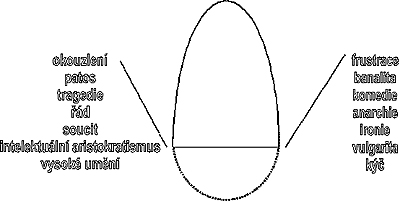
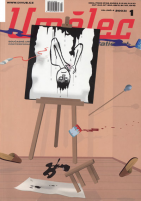







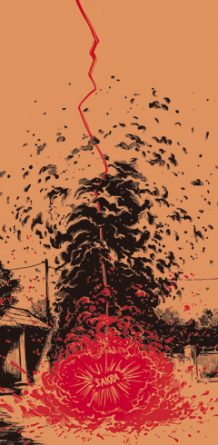











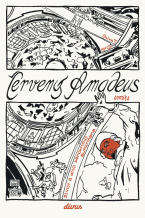
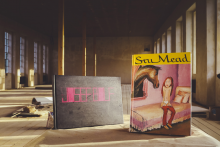
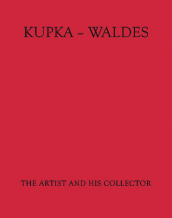
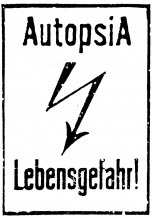


 New book by I.M.Jirous in English at our online bookshop.
New book by I.M.Jirous in English at our online bookshop.
Kommentar
Der Artikel ist bisher nicht kommentiert wordenNeuen Kommentar einfügen